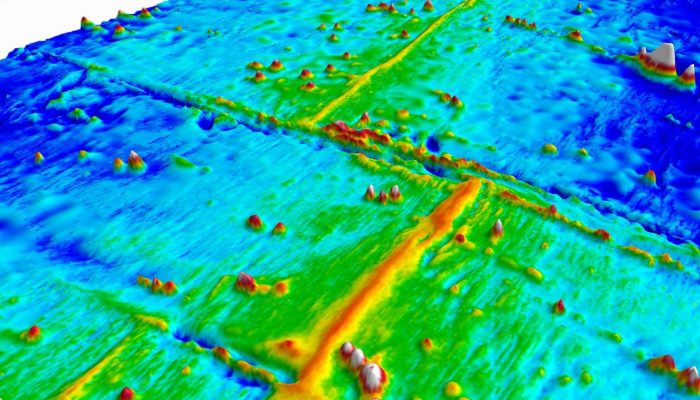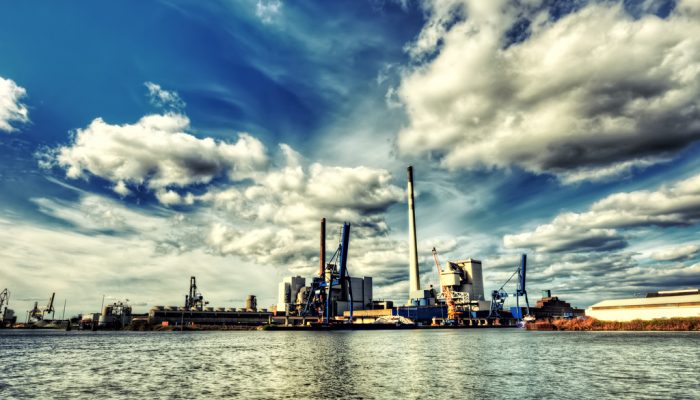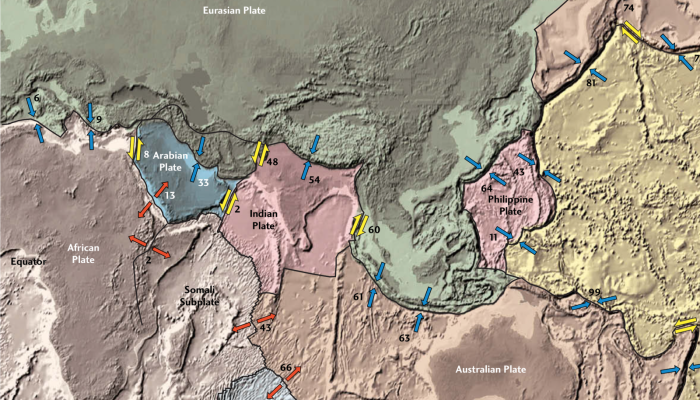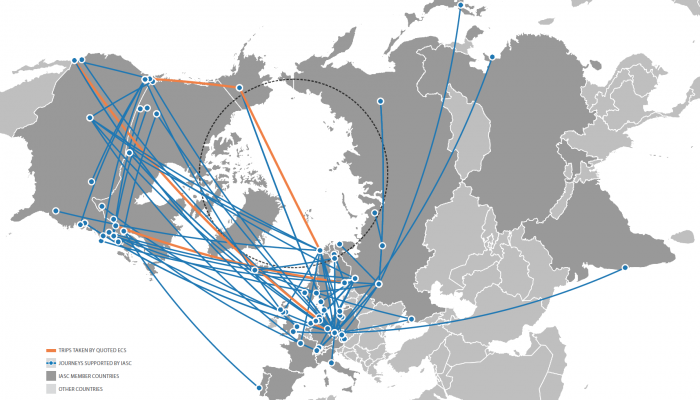In this edition of Minds over Methods, Aurore Sibrant, postdoc at Bretagne Occidentale University (France) explains how she studies the shape of oceanic ridges, and which parameters are thought to control this shape. By using laboratory experiments combined with observations from nature, she gives new insights into how spreading rates and lithosphere thickness influence the development of oceanic ...[Read More]
Cryospheric Sciences
Image of the Week – Breaking the ice: river ice as a marker of climate change
Common images associated with climate change include sad baby polar bears, a small Arctic sea ice extent, retreating glaciers, and increasing severe weather. Though slightly less well-known, river ice is a hydrological system which is directly influenced by air temperature and the amount and type of precipitation, both of which are changing under a warming climate. Ice impacts approximately 60 % o ...[Read More]
Geodynamics
An industrial placement as a geodynamicist
After years of trying to get a PhD, publishing papers, networking with professors, and trying to land that one, elusive, permanent job in science, it can be quite easy to forget that you actually do have career options outside of academia. To get a little taste of this, Nico Schliffke, PhD student in geodynamics at Durham University, tries out the industry life for a few weeks! When coming close t ...[Read More]
Tectonics and Structural Geology
Meeting Plate Tectonics – Peter Molnar
These blogposts present interviews with outstanding scientists that bloomed and shape the theory that revolutionised Earth Sciences — Plate Tectonics. Get to know them, learn from their experience, discover the pieces of advice they share and find out where the newest challenges lie! Meeting Peter Molnar Active in different research areas of the Earth Sciences, Prof. Peter Molnar has been Professo ...[Read More]
Natural Hazards
Time for submissions: sessions proposed by NhET at the next EGU conference!
The new year is approaching, and at the beginning of 2019, there is also the deadline for the submission of abstracts for the next EGU conference in Wien, from the 7th to the 12th of April 2019. The Natural hazards Early career scientist Team has proposed many sessions and short courses. Below you can find a list of them. We also remind that there is the opportunity for financial support to ...[Read More]
Solar-Terrestrial Sciences
EGU for Early Career Scientists
This months post is written by the ST Divisions Early Career Scientist representative, Theresa Rexer. Are you ready for the EGU general assembly 2019? Got your abstract ready and submitted? No, what? Too early you say? No funds? As your Early Career Scientist Representative, let me tell you why now is the perfect time to start planning your trip to Vienna in April next year. Especially if you are ...[Read More]
Cryospheric Sciences
Image of the Week – Karthaus Summer School 2018
Nearly every year since the late 90s, during the summer, the picturesque Karthaus has hosted 10-day glaciology course. This school is a platform for glaciologists to explore, learn and expand their knowledge base. This helps researchers become multi-faceted: to view glaciology from the perspective of those specializing in other backgrounds such as hydrology, geomorphology, oceanography, etc. which ...[Read More]
Geodynamics
Thoughts on geological modelling: an analogue perspective
In geodynamics we study the dynamics of the Earth (and other planets). We ground our studies in as much data as possible, however we are constrained by the fact that pretty much all direct information we can collect from the interior of the Earth only shows its present-day state. The surface rock record gives us a glimpse into the past dynamics and evolution of our planet, but this record gets spa ...[Read More]
Cryospheric Sciences
Image of the Week – Promoting interdisciplinary science in the Arctic: what is IASC?
The Arctic is one of the fastest changing regions on the Earth, where climate change impacts are felt both earlier and more strongly than elsewhere in the world. As an integral part of the Earth system, the Arctic is shaped by global processes, and in turn, Arctic processes influence the living conditions of hundreds of millions of people at lower latitudes. No one country or community can underst ...[Read More]
Seismology
When the Earth gets animated
Animations are a terrific way to engage students and to support public understanding of Earth Sciences. Yet, to make scientific research accessible, visual and fun is not easy. How do animations bring geophysics concepts to life? We asked the expert, Jenda Johnson (IRIS Education and Public Outreach) When it comes to explaining Earth’s processes, animations come to the rescue. Tectonic plate ...[Read More]









